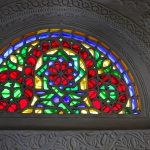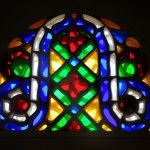As of Tuesday 19th December, Yemen had experienced 1,000 days of civil war between forces loyal to the government of President Adbrabbuh Mansour Hadi and those allied to the Houthi rebel movement. During this period, more than 1000 people have been killed and 49000 injured, while more than 3 million have been displaced. 20 million people, including 11 million children, are also in need of humanitarian assistance and created the world’s largest food security emergency to date.
“Mr Hadi struggled to deal with a variety of problems, including attacks by al-Qaeda, a separatist movement in the south, the continuing loyalty of many military officers to Mr Saleh, as well as corruption, unemployment and food insecurity.” – BBC
Dynamics of the war changed when Ali Abdullah Saleh was killedOnly in December did cracks begin to appear in Mr Hadi’s forces, potentially sparking a fresh effort at end of war negotiations. At current, there have been no leads to whom will win this war, and where the steps taken after would lead the country.
Architecture has always been a large part of Yemen’s history and culture. Most of Yemen’s architecture boasts a non-repetitive design, which logically should look ugly, but in fact looks beautiful. There are similarities of colour, window patters, shape, alignment, positioning and size, but also a ‘rugged beauty’ that when mixed all together, these buildings hold. Many of the settlements, towns and cities are on hilltops and near a fertile bed, or a river. The buildings themselves are crafted out of mud brick, with some buildings reaching an impressive 100ft. The walls would be built thick, with small windows to keep the heat of the day out. Windows are also set low within the room with decorative niches above them, often where personal possessions are stored. As you gradually went up the building, these walls would become thinner. “These gently canted walls give the building a dignity and monumentality as a result of structural and materials concerns. The wall is not trying to look beautiful” (MisfitsArchitecture.com).
Stained glass windows are predominately found in the ancient city of Sana’a. These stained glass windows are known as ‘Qamariya’, or ‘windows of the moon’ and are virtually always used as a small decorative window above a main window. There are hundred of these throughout the city, but no two are the same. Qamariya windows we common much earlier than the ancient Greek and Byzantine cultures, with the main motifs of the crescent moon and star, which can still be seen in the windows today.
“At night, when they shine out of on the tall buildings and narrow stone alleyways of the old city, the Qamariya windows transform this old mountain fortress and its Afro-Arab people into a lively market town with an artistic and esthetic overlay. It is a calming experience just to walk the streets and take in the multicolor glows.” – Further To Fly
Arabic is the main language in Yemen, with many of its people following Islam. Yemeni Arabic in particular is a mix of different varieties of Arabic, commonly spoken in the geographical area. Each dialect can be found due to their own distinctive set of vocabulary and phonology. Arabic texts often talk about Allah, whom is their God.


















Leave a Reply